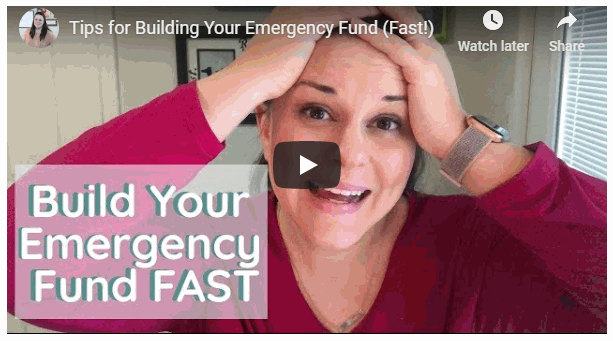Showing your love and appreciation for your family can go from heartwarming birthday messages and memorable outings, all the way to investing in your future. More than anything, financial preparedness is one of the best things you can give your loved ones. Having savings and investments in place helps take care of any future financial needs or unexpected incidents.
Although financial preparedness includes things like life insurance, part of being financially prepared is simply having a family emergency fund. Creating this fund lets you focus on the essential things and rest easy knowing you’re prepared for any situation that can happen. When you first get started, building up your emergency fund can seem like a daunting task, though the process can be simplified into three steps:
Determine Your Goal Amount
Any financial plan starts by thinking about the end goal. It’s important to know how much you need in order to work towards building that amount up. There are two purposes of an Emergency Fund. The first is to cover expenses that don’t occur very often such as car repairs, a broken water heater or an unexpected medical bill. Estimating these types of expenses can be difficult since they vary, so you will just have to determine an amount that you feel comfortable with. Fortunately, you can use the second type of emergency fund to cover the first type of “emergency” and then just work toward rebuilding the fund.
The second type of emergency is to cover your regular expenses should you lose your income. When computing this goal amount, you need to consider the following expenses:
- Recurring expenses like food and utilities
- Health care and insurance
- Transportation
- Personal expenses such as clothes, cellphone load, and school supplies
- Debt payment
The idea behind maintaining an emergency fund is to get through an unexpected tight spot without taking drastic measures and severely affecting your way of life. Anything outside of these categories can be classified as non-essentials and skipped out on in the event of need, like job loss or illness. When first starting out your goal should be to have three months of expenses covered. When you reach that goal you should consider shooting for six months.
Other factors that can affect your goal amount include job security, work skills, and other possible sources of emergencies. Having an unstable income and uncertain job terms will mean a higher fund goal. This also applies to how marketable your work skills are—the less confident you are, the higher your goal amount should be.
Finally, aside from losing a job, things like your family’s overall health condition will come into play. The bigger the chance of risk to a family member’s health, the greater the amount you need to set aside.
Find a Place to Store Your Fund
Gone are the days where people keep money under their mattresses or in a box tucked inside the cabinet to be pulled out during desperate times. Your emergency fund will be a substantial amount that your family will be relying on during an unfortunate event. It goes without saying that you’ll need to keep it in a place that is secure but easily accessible to you when you need it.
Consider opening a basic savings account to keep your fund in. While it may not be earning interest, it won’t be incurring charges for being below the balance. This should be a separate account than what you use to pay for regular expenses. By having the funds separated you will be less likely to dip into them for frivolous expenditures.
List the Reasons to Use It
Finally, having an emergency fund means knowing what counts as an emergency and what does not. Being clear about this makes it easier for you to leave your emergency fund alone until the need arises. By actually writing the criteria down you will be less likely to make excuses for yourself to dip into it. Before withdrawing from the fund, ask yourself the following questions:
1. Is it unexpected?
Events like job loss or your house getting submerged in a flash flood are not usually expected and undoubtedly unavoidable. Money from your fund can be used to sustain your family until you find new work or cleaning up and repairing the flood damage to return your house to a functional state.
2. Is it necessary?
It’s essential to know the distinction between needs and wants, especially in the face of an emergency. Medication for a chronic illness, maintenance work to keep the house livable, food, and other supplies are just some of the necessities that your fund should be able to cover.
3. Is it urgent?
What sets an emergency apart from regular needs and household upkeep is the urgency. Moving to a bigger home can be carefully planned over a year or more. Getting into a car accident and needing medical attention will require immediate action.
While people may think that anticipating dire events is but negative thinking, creating a family emergency fund is quite the opposite. By setting aside money now, you can develop a sense of safety and stability for you and your loved ones. So start your emergency fund today and sleep well knowing you’re prepared for anything the future holds.
You might also like:
- Saving for Your Child’s Future
- Not Saving Enough?
- Has Your Family Hit These Money Milestones?
- 6 Ways to Stuff Your Piggy Bank
Author Bio:
AJ Balois is a Content Manager at BPI-Philam, a bancassurance company, based in the Philippines. She’s been working in the banking and insurance industry for seven years. Upon realizing the power of being financially literate, AJ promised to share her knowledge through informative and educational content.

